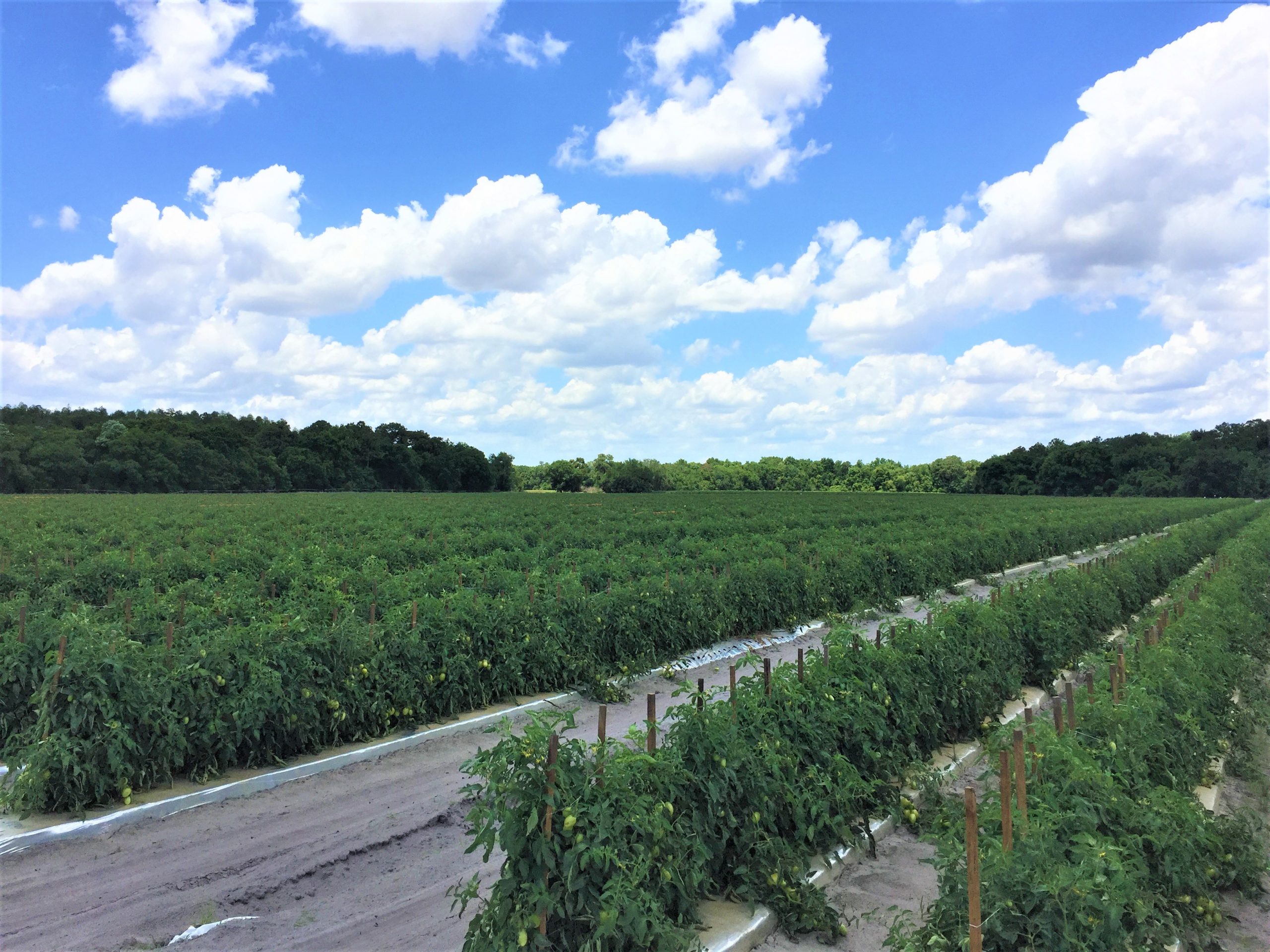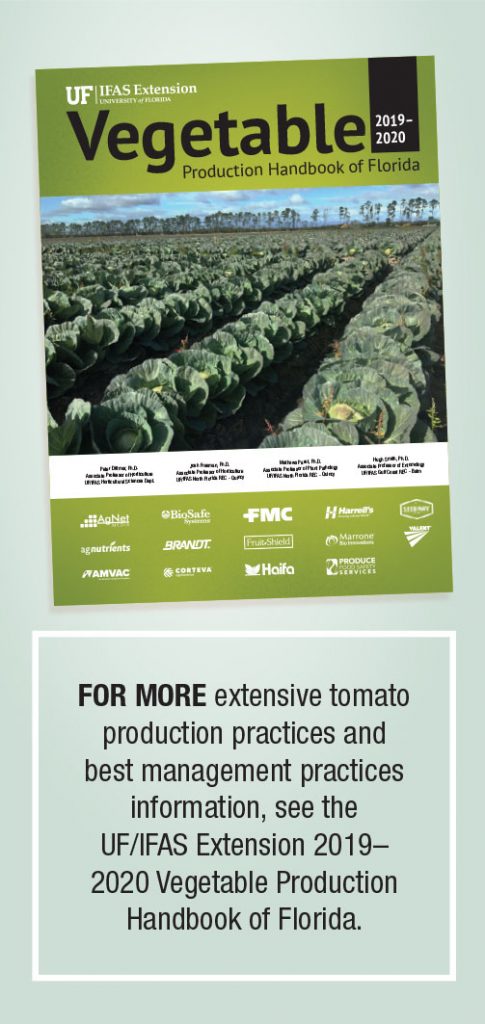By Phillip Williams

Tomatoes are grown statewide in Florida in a diverse manner depending on the region of the state. Sandy soils make up the dominant soil type for tomato production in Florida. Sandy soils are prone to leaching mobile nutrients such as nitrogen, potassium and even phosphorus by heavy rain or excessive irrigation. Therefore, sandy soils must be managed carefully regarding fertilization programs and irrigation scheduling.
Most tomatoes grown in Florida are on plastic mulch, which helps retain nutrients in the soil. When using plastic mulch, fertilizer placement depends on the type of irrigation system (seepage or drip). Fertilizer recommendations should take into consideration soil pH, residual nutrients and inherent soil fertility.
Therefore, fertilizer recommendations based on soil test analyses have the greatest potential for providing tomatoes with adequate but not excessive fertility. The soil test extractant used in University of Florida/Institute of Food and Agricultural Sciences (UF/IFAS) recommendations recently has changed to Mehlich 3.
SOIL pH
Soil pH is the basis for any fertilizer management program since it influences plant growth, the availability of nutrients and the activities of microorganisms in the soil. The optimal pH range for tomato production is 6.0 to 6.5. However, soil pH in Florida can vary considerably based on the region of the state. Two common problems in Florida have been over-liming and the use of alkaline irrigation water. These practices result in high soil pH tying up micronutrients and phosphorus causing a restriction of their uptake by plants.
Liming can not only adjust soil pH but also provide calcium and magnesium. The two most common liming materials are calcitic and dolomitic limestone. Dolomitic limestone contains 6 to 12 percent magnesium in addition to calcium.
NITROGEN
Nitrogen (N) often is the most limiting nutrient in Florida’s sandy soils. The recommended N rate for tomatoes is 200 pounds per acre for the whole growing season. This amount of N must be applied each growing season because of crop uptake and leaching.
One-third to one-half of the recommended N should either be incorporated into the bed prior to plastic installation and/or be placed in narrow bands on the bed shoulders. These bands should be placed in shallow (2- to 2.5-inch deep) grooves. Apply the remaining recommended N through drip irrigation. Keep in mind that excessive N applications can delay maturity, cause rank growth with decreased fruit set, and reduce shipping quality of fruit.
PHOSPHORUS AND POTASSIUM
All phosphorus (P) and micronutrients should be incorporated in the bed. Apply 10 to 20 percent (but not more) of the potassium (K) with the P. The remaining K should be placed in the same narrow bands on the bed shoulders as described in the nitrogen section. This placement requires that adequate bed moisture be maintained so that capillarity is not broken. Otherwise, fertilizer will not move to the root zone.

Excess moisture can result in fertilizer leaching. Fertilizer and water management programs are linked. Maximum fertilizer efficiency is achieved only with close attention to water management. See Table 1 for P and K recommendations based on a low, medium and high Mehlich 3 soil test results.
FERTIGATION

Common irrigation systems used for fertigation include drip, sprinkler and pivot systems. Advantages of fertigation over conventional fertilizing methods are: 1) more efficient delivery of nutrients, 2) more precise localized application, 3) more flexible control of application rate and timing, and 4) lower application cost. See Table 2 for fertigation recommendations.
OTHER NUTRIENTS

The secondary nutrients calcium (Ca), magnesium (Mg) and sulfur (S) have not been a common problem in Florida. Calcium usually occurs in adequate supply for most vegetables when the soil is limed. Since there is not an interpretation for Mehlich 3 soil Ca yet, Mehlich 1 soil Ca interpretation is still used. If the Mehlich 1 soil Ca index is above 300 parts per million, it is unlikely that there will be a response to added Ca. Maintaining correct moisture levels in the soil by irrigation will aid in Ca supply to the roots. Since calcium is not mobile in the plant, foliar sprays of Ca are not likely to correct deficiencies.
If no lime is needed, then the Mg requirement can be satisfied through use of magnesium sulfate or potassium-magnesium sulfate. Blending of the Mg source with other fertilizer(s) to be applied to the soil is an excellent way of ensuring uniform application of Mg to the soil.
Sulfur deficiencies have seldom been documented in Florida tomatoes. Sulfur deficiency would most likely occur on deep, sandy soils low in organic matter after leaching rains. If S deficiency is diagnosed, it can be corrected by using S-containing fertilizers in a blend at levels enough to supply 30 to 40 pounds S per acre.
Phillip Williams is an assistant professor of vegetable horticulture at the UF/IFAS Southwest Florida Research and Education Center in Immokalee.









